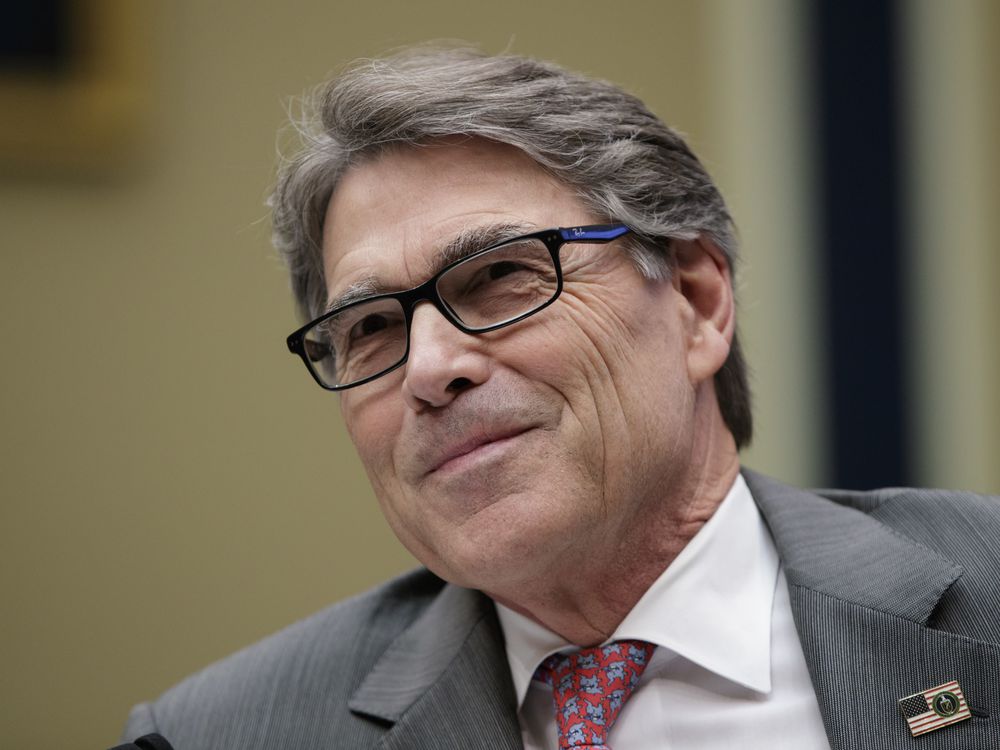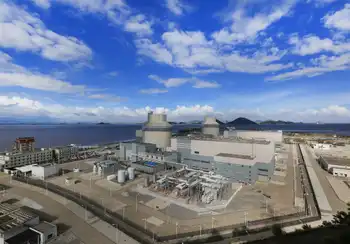Reliable, affordable energy and the nuclear option
Unlike most products, electrical energy is fraught with thorny economic issues. These include market competitiveness (e.g., the generation and distribution of energy resembles monopoly more than perfect competition), the emission of pollution, and public safety. Consequently, government regulation of the power industry in some shape or form is common around the globe.
Historically, when governments enmesh themselves in the regulation of industry, they have a nasty habit of micromanaging, picking “winning” firms and technologies. True to form, the current energy debate centers on what proportion of America’s electric energy should be generated by “green” sources, and what form those “green” sources should take (e.g., wind, solar, biomass, etc.).
The answer to these questions will have significant ramifications for the U.S. economy for decades to come. In what follows, we explore these economic ramifications in greater detail, and compare wind power (currently the cheapest source of green energy) with what we believe is the best energy option: nuclear power.
Reliably affordable energy is important because swift surges in energy prices typically have harmful economic effects. Commonly called “supply shocks,” high-energy prices ultimately stoke inflation, reduce economic output, and swell the ranks of the unemployed. The process begins by raising production costs in energy intensive industries such as manufacturing and transportation. In response, these industries attempt to pass along these higher costs to their customers (typically other firms). This puts pressure on industries further up the economic food chain to raise their prices, as they are forced to pay more for the goods and services they receive from energy-intensive suppliers.
For example, high diesel fuel prices force trucking firms to raise the rates they charge retailers to move merchandise to their stores. Retailers, in turn face higher costs, which they attempt to pass along to their customers in the form of higher retail prices. In this way, higher energy prices both directly and indirectly raise the cost of doing business, thereby increasing prices across the entire economy in a process called “cost-push inflation.”
In addition to facing higher prices for virtually everything they purchase, households must also contend with higher energy expenses in the form of pricier gasoline, heating oil, natural gas, and electricity. Not surprisingly, households respond by paring consumption, which typically represents 70 percent of U.S. gross domestic product (GDP). The combination of declining sales and higher production costs squeeze corporate profits and force businesses to lay off workers and reduce output. In this way, a spike in energy prices ultimately fosters higher inflation, falling output, and rising unemployment.
Although the meltdown of the U.S. housing market is principally to blame for the current recession, the massive run-up in energy prices that peaked in the summer of 2008 certainly played a role in the United States entering into recession later that year (indeed, some have argued that high energy prices prior to September 11, 2001 contributed to that yearÂ’s recession).
These downturns notwithstanding, the most oft-cited examples of energy-related supply shocks are the recessions of 1974 and 1980. Beginning in late 1973, the Organization of the Petroleum Exporting Countries (OPEC) initiated an embargo that lead to a nearly fivefold increase in crude oil prices in the span of just one year.
The following year, the U.S. economy was in recession.
From the time the crisis began in October 1973 until the peak of the recession in May 1975, average prices rose by nearly 17 percent, economic output dropped by 2.4 percent, and unemployment soared from 4.6 percent to 9 percent. In the wake of the Iranian revolution of 1979, crude prices doubled, and the United States entered another period of recession. From July 1979 to July 1980, average prices surged 13 percent, output dropped 1.6 percent, and unemployment jumped from 5.7 percent to 7.8 percent.
Given this historical background, how will an aggressive push toward green energy affect the U.S. economy today?
The Obama administration claims that a shift to green energy will create a staggering 5 million new jobs over 10 years. A careful examination of data available from the Bureau of Labor Statistics casts serious doubt on the credibility of that estimate. As of May 2008, the entire electric utility industry (generation, transmission, and distribution) employed 401,550 workers, and the electric and power transmission equipment manufacturing industries employed a combined 259,530 workers, while the industries that provide the fuel (e.g., natural gas, oil, and coal) collectively employed 335,380 workers.
Putting all of this together, the entire electric power industry — from the manufacturing of the equipment, to the mining and drilling of fuel, to the generation of power, and the ultimate delivery of that power to customers — employs just over 996,000 workers, or about 20 percent of the Obama green job estimate. Creating 5 million new “green” jobs is not even remotely credible.
WhatÂ’s more, most green job estimates ignore all of the jobs lost because of higher energy prices. In both the 1974 and 1980 recessions, the unemployment rate surged by 4.4 and 2.1 percentage points, respectively. As of May 2009, the U.S. labor force stood at 160 million workers. Therefore, every one percentage point increase in the unemployment rate results in nearly 1.6 million lost jobs. With this in mind, even if President ObamaÂ’s energy policies create a mere 250,000 green jobs, the resulting high energy prices (which we discuss in greater detail below) are likely to slow economic growth and spur unemployment in the wider economy.
Job losses outside of the energy sector equivalent to a miniscule two-tenths of a percentage point (0.2 percent) of the nationÂ’s labor force (250,000 jobs) would exactly offset the green job gains. In light of the U.S. economyÂ’s historic sensitivity to high-energy prices, an aggressive push toward green power would likely result in the net loss of millions of jobs.
Having dispensed with the broader macroeconomic implications of the Obama administrationÂ’s energy policy, we turn to a detailed comparison of wind and nuclear power. We focus on wind power because it is the current green energy frontrunner.
According to the U.S. Department of Energy (DOE), the wind industry enjoyed 30 percent annual growth from 2003 to 2007, and represented 30 percent of all new domestic generation capacity in 2007. Moreover, the Obama administration is a vocal supporter of wind power. Wind will likely be a major player in AmericaÂ’s future green-energy portfolio.
Throughout recorded history, humans have harnessed wind energy for various applications. The Egyptians used sailboats to navigate the Nile approximately 7,000 years ago, while the Chinese developed windmills to pump water by 200 BC. Despite this long experience utilizing wind power, man has been unable to fully overcome this technologyÂ’s chief shortcoming: it neither produces energy nor does any work when the wind stops blowing (also known as the intermittency problem).
Over the millennia, this problem has been ameliorated through the use of backup or storage systems. For sailboats, it is muscle-power and oars; for water pumps, it is storage tanks. Unlike our ancient ancestors, modern engineers have struggled to develop cost-effective storage systems for wind-generated electricity.
That struggle continues today as researchers explore six different technologies to help boost windÂ’s potential, including batteries, compressed air, capacitors, hydrogen generation and storage, flywheels, and superconducting magnetic energy storage; however, none of these is yet commercially viable. The only storage technology currently in operation in the United States is pumped storage, which consists of a large body of water (a lake or reservoir) and turbines attached to generators.
During peak times, water can be quickly released from the lake, driving the turbines and generators, and thus producing hydroelectricity. During periods of low energy demand, such as at night, the process runs in reverse, with the turbines acting as pumps and moving water back into the lake.
Unfortunately, this is an inefficient and costly way to store electricity, and thus is not a viable solution for wind energy. Consequently, electric companies rely on backup generation systems, typically natural gas-fired turbines, which must be rapidly brought on- and offline with fluctuations in the wind and consumer demand.
One measure of the intermittency of an energy source is the capacity factor, which equals the ratio of the amount of electricity generated to the maximum amount a turbine could generate. Alternatively put, the capacity factor measures the reliability or dependability of an energy source. Using information from the American Wind Energy Association (AWEA), the average annual capacity factor for wind is 31.8 per cent.
This means that wind turbines produce just under one-third of their maximum potential output. Compare this to nuclear power plants, which are nearly three times as reliable as wind power. According to the DOEÂ’s Energy Information Administration (EIA), nuclear power achieved a capacity factor of 91.5 percent in 2007. Given the major intermittency problems of wind, what are the potential consequences of relying on such a capricious energy source?
Vattenfall Europe Transmission, a regional power company that services northeastern Germany and controls 41 percent of that nationÂ’s wind-generating capacity, is an instructive case study in how intermittency affects the daily operations of an electric transmission system. Like the United States, the transmission system in Germany is antiquated and limited in its ability to direct electricity outside a given region.
However, unlike American operators who generally schedule and coordinate power generators a day ahead, the unpredictability of wind forces Vattenfall to abandon daily scheduling approximately 50 percent of the time. Consequently, Vattenfall relies heavily on backup generation systems to lessen fluctuations in customer demand and intermittent supply, which necessitates the frequent starting and stopping of backup electric generators, which is very costly and inefficient from both an economic and engineering perspective.
All too often, these backup generation costs are not included in cost estimates used in the green energy debate.
That being said, it would be a mistake to conclude that intermittency poses only logistical problems in the generation of electricity. In its most acute form, intermittency can give rise to complete or rolling blackouts.
This nearly occurred in early 2008, when a cold front moved through Texas and unexpectedly reduced wind speeds. Electric output from wind turbines in the state plunged 82 percent, from 1,700 to a mere 300 megawatts, forcing power operators to implement rolling blackouts to avoid system failure.
This event is especially disturbing when one considers that the DOE has extensively surveyed U.S. wind resources and concluded that the panhandle of Texas through Kansas and into the Dakotas is the optimal region for wind turbines.
Apart from the obvious public safety problems posed by power outages, their economic impact can be severe. The DOE estimates that the prolonged blackout hitting the northeastern United States on August 14, 2003 cost Americans $6 billion (or about $250 million per hour).
While this blackout was not caused by a failure of green energy, it vividly illustrates the economic costs stemming from a prolonged power outage.
India provides another example of the economic consequences of an unreliable electricity system. IndiaÂ’s rapidly expanding market economy belies a legacy of socialist policies that have left the nation with an archaic transmission system and a shortage of generating capacity. Consequently, the nation experiences blackouts on a regular basis.
The World Bank reports that approximately 30 percent of business owners believe unpredictable electricity service is the main obstacle for the Indian economy. Despite the desperate need for additional generation capacity, India has struggled to find sites for new facilities, and environmental regulations have further slowed the development of generating assets.
This challenge is further exacerbated by the uncertainty created by fear of future regulatory changes.
Scale is another area where nuclear energy trumps wind power.
The latest nuclear reactor designs can produce up to 1,500 megawatts, as compared to the largest wind turbine, which generates a mere 5 megawatts. Ignoring differences in capacity factors, 300 wind turbines are required to equal one nuclear plant. If output reliability is taken into account, approximately 863 wind turbines are required to equal the output of one nuclear power plant.
All of this raises a natural question: if the public wants to eliminate pollution/CO2 emissions, but green technologies fail to deliver both low cost and reliability, how can this policy objective be met? The answer lies with nuclear power.
In the 1970s, with global energy prices surging, many developed nations took a keen interest in nuclear power. This golden age of nuclear power was not to last, as accidents at Three Mile Island in 1979 and Chernobyl in 1986 prompted many nations to either close their existing plants or placed moratoriums on constructing new ones.
Over the ensuing 30 years, safety improvements along with nuclear waste-reducing breakthroughs have greatly increased the attractiveness of atomic power. When coupled with the ability to produce a reliably large quantity of pollution-free, low-cost energy (6.5 cents per kWh, according to the Electric Power Research Institute, EPRI), it is no surprise that the industryÂ’s nuclear winter is beginning to thaw.
According to the EPRI, Algeria, Argentina, Armenia, Azerbaijan, Belarus, Brazil, Bulgaria, Canada, Chile, China, Egypt, Finland, France, India, Indonesia, Jordan, Kazakhstan, Libya, Lithuania, Mexico, Morocco, Oman, Pakistan, Poland, Romania, Russia, Saudi Arabia, South Africa, Sweden, Turkey, Ukraine, Vietnam, the United Arab Emirates, the United Kingdom, and the United States are either considering or building new facilities.
In addition to the 437 reactors in use today, the International Atomic Energy Agency predicts that 70 new plants will go online within the next 15 years, with 55 already under construction.
Although construction cost estimates for the first nuclear plants to be built are high (between $5 and $7 billion), most knowledgeable observers believe that cost will decline as the United States retools the related industries needed to support a vibrant atomic power industry.
The poster child for nuclear power is France, which generates more than 80 percent of its electrical energy using atomic power. The French model is instructive on a number of levels.
First, it demonstrates that nuclear power is highly scalable, meaning that nuclear power plants can be built in large numbers to meet the desired electric generation needs of an entire nation. By contrast, most renewable energy sources suffer from intermittency problems (e.g., wind and solar), limited natural resource availability (e.g., hydroelectric and biomass), and power grid distribution issues (i.e., the regions where the power is produced are isolated and not well connected to the existing electric utility grid).
Consequently, ambitious green energy proposals, like that of the Obama administration, do not envisage renewable energy providing more than 20 percent of the U.S.Â’s electric power needs.
A second notable feature of the French model is the significant strides made to reduce radioactive waste. Unlike the United States, which officially shunned the reprocessing of spent nuclear fuel from commercial reactors in 1977, the French have openly embraced it.
While the science behind reprocessing is quite complex, the basic idea is surprisingly simple.
Roughly 96 percent of spent nuclear fuel rods are recyclable. The French separate the ancillary non-recyclable materials from the recyclable uranium and plutonium, which are in turn recombined in a four-phase process to produce mixed oxide (MOX) fuel. This significantly reduces both total waste and the demand for newly mined uranium.
Far from contributing to weapon proliferation, the MOX recycling approach creates no net increase in plutonium over the fuel cycle and can be used to convert weapons of mass destruction (WMD) into peaceful civilian energy.
Areva, the government-owned enterprise responsible for reprocessing FranceÂ’s spent fuel, has found that reactors that use a 30 percent MOX and 70 percent conventional fuel mixture actually produce as much plutonium as they consume over the fuel cycle, thus significantly reducing nuclear proliferation fears.
Indeed, the MOX fabrication technique is helping to pound the swords of the Cold War into AmericaÂ’s energy plowshares.
In 1999, the DOE contracted with Areva to build a MOX fabrication facility near Aiken, South Carolina. The Savannah River plant will take weapons-grade plutonium from decommissioned U.S. warheads and combine it with uranium oxide to produce MOX for AmericaÂ’s nuclear power industry.
America is at an energy crossroads. The paths before us are well trodden. One path represents what we call the German Model, which relies on expensive and heavily subsidized wind and solar power (7.7 to 12.7 cents per kWh for wind, and 64 to 87.4 cents per kWh for solar). The other, less-traveled path represents what we call the French Model, which can produce vast, reliable quantities of cheap energy (6.5 cents per kWh) safely while creating very little radioactive waste.
Adopting the German Model will reduce employment and economic growth in the United States by forcing Americans to depend upon expensive and inherently unreliable sources of energy. Embracing the French Model will do the opposite.
However, America faces three significant hurdles if embarking on the French path.
First, the cost of constructing new installations is prohibitive. No less a free market advocate than Adam Smith recognized the need for public investment in projects that were both crucial to commerce but too expensive to be reasonably financed by the private sector. While Smith was principally concerned with bridges, canals, and roads, that list has since grown to include railroads, large commercial ports, interstate highways, airports, etc. It does not seem unreasonable to add nuclear power to this list, as the permit application and construction costs will likely exceed $5 billion for the first new reactors.
In practice, this public investment could be either direct, following the example of the federal governmentÂ’s operation of nuclear facilities under the auspices of the Tennessee Valley Authority, or indirect, taking the form of loan guarantees.
The second major obstacle is the ever-present risk that future regulatory changes may forcibly shut down U.S. reactors. Nuclear installations typically have a 40- to 60-year lifespan, plenty of time for future administrations or Congress to change the rules of the game and mothball facilities being built today.
Given the massive fixed (capital) costs involved in constructing new plants, many years of continuous operation are necessary to successfully recoup these sunk costs. Because the government is largely responsible for creating this regulatory risk, it must therefore bear the cost of assuming that risk. If the government constructs new facilities, this is achieved automatically.
However, if policy makers wish to encourage private investment in nuclear energy vis-Ã -vis subsidies, the government must also assume the role of loan guarantor, thereby shifting future regulatory risk from private investors to the public sector.
Finally, the third hurdle involves the reprocessing of spent nuclear fuel. The American people will not support atomic energy if it results in a massive buildup of radioactive waste. Areva has shown that reprocessing can be done effectively without increasing the danger of WMD proliferation.
Related News

Wall Street Backs Rick Perry’s $19 Billion Data Center Venture
HOUSTON - Wall Street backs Rick Perry’s $19 billion nuclear-powered data center venture, Fermi America, combining nuclear energy, AI infrastructure, and data centers to meet soaring electricity demand and attract major investors betting on America’s clean energy technology future.
What is "Wall Street Backs Rick Perry’s $19 Billion Nuclear-Powered Data Center Venture”?
Wall Street is backing Rick Perry’s $19 billion nuclear-powered data center venture because it combines the explosive growth of AI with the promise of clean, reliable nuclear energy.
✅ Addresses AI’s massive power demands with nuclear generation
…




